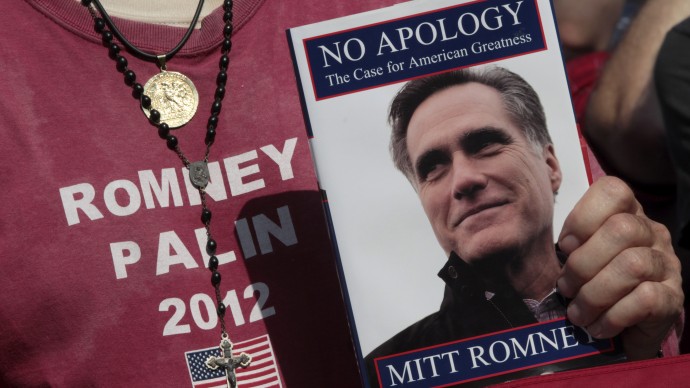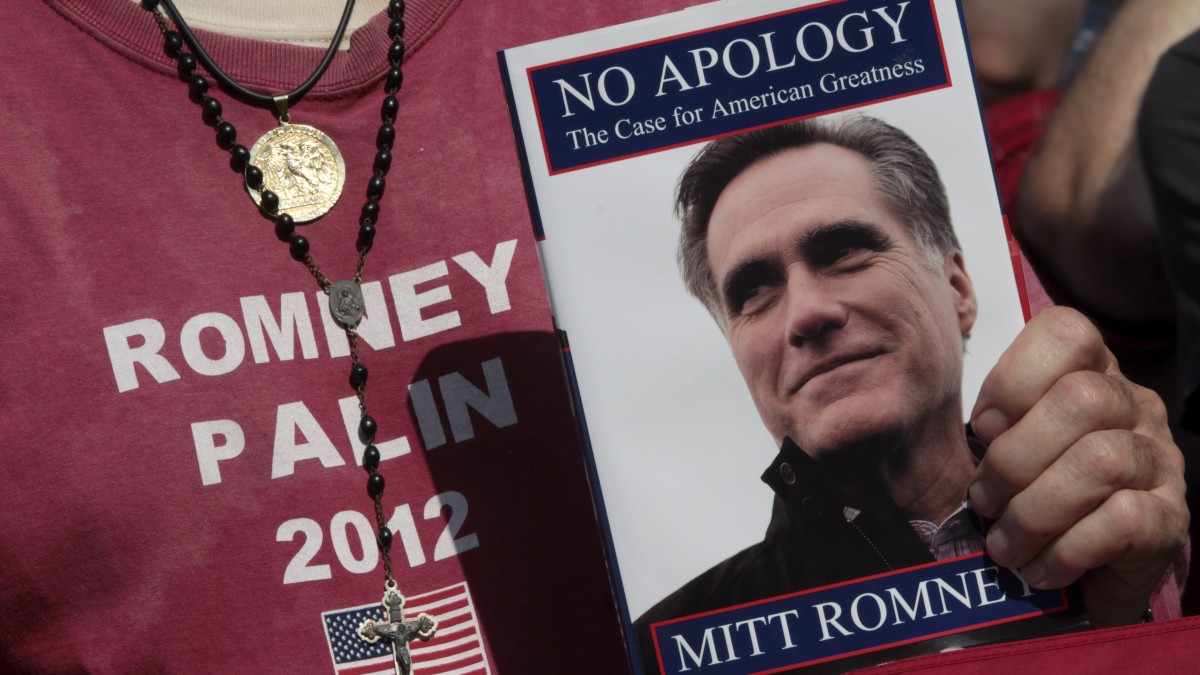
Another day, another poll indicating just how reactionary and backward the GOP has grown. This time around it is a poll released Aug. 22 by Zogby for the Arab-American Institute that queries Americans on their general attitudes toward various religious and ethnic groups residing in the United States. One should not be surprised that if you aren’t part of the “Judeo-Christian” tradition the GOP doesn’t think much of you.
According to the poll, self-identified Republicans report a 70 percent-80 percent favorability rating toward Presbyterians, Jews, Baptists, Catholics and Evangelicals. Even Mormons come in with a 58 percent favorable rating – some consolation to Mitt Romney, the Mormon Republican trying to unseat President Obama. However, when you ask conservatives about Buddhists, Hindus, Muslims, Sikh’s and Arabs – not a religious group of course but often conflated with Muslims by the U.S. media – favorability ratings plummet well below the 50 percent mark.
Arab-Americans, a group one would think would be covered by the stars and stripes, received a 33 percent favorable rating from GOP voters. Arabs in general score six percentage points lower – at 27 percent. In turn, only 26 percent of Republicans view Muslims favorably, while Muslim-Americans get only a 35 percent favorability rating from GOP voters. Hindus and Sikhs, groups who are are often confused for Arabs and Muslims by gun-toting white supremacists, are viewed favorably by only 45 percent and 36 percent of Republicans respectively. Finally, only 46 percent of Republican voters view Buddhists favorably. I can only imagine how atheists and other non-believers rank in terms of favorability by GOP voters.
Religious polarization is mirrored by racial and ethnic polarization. African-Americans, never a huge Republican constituency in the modern era, have abandoned the party even further – to the point that one can only assume that the black crowd members at Romney rallies are either paid actors or photo-shopped in. Hispanics, who were once touted as socially conservative replacements for Caucasian conservatives, have also left the GOP’s big tent as conservative media stokes anti-immigrant hysteria and Republican lawmakers promulgate “papers-please” laws. The Democrats also have a lock on Asian-Americans, who make up an important voting bloc in the solidly liberal bastions running up and down the Pacific coast.
Young voters
The last component to the GOP’s looming demographic catastrophe is its diminishing appeal to the educated and the young. In the 1980s, Republicans were the party of the educated by double digits – particularly for folks with professional degrees like J.D.s, MBAs and medical doctors. Today, it is the Democrats who receive the votes of educated professionals. As for the young, polls show that Millennials – the generation of kids born between roughly 1980 and 2000 – are the most liberal-leaning voting group yet. In no small part the votes of this generation sealed Obama’s victory in 2008 – and they have absolutely no truck with the GOP’s views on race, gays, women and a host of other issues.
All this reflects the political geography of red and blue that we have come to know so well. The GOP is the party of rural areas and the Democrats the party of urban areas because that’s where their respective demographic bases cluster. Blue states have a plethora of major cities while red states have few or none. In turn, this suggests that the red-blue culture war is not really new. Indeed, political division between city and country is one of the oldest political divides there are. The yokels living out in the surrounding hinterland have always resented cities which, as centers of commerce, industry, science and cosmopolitan culture, often threaten rural culture and folkways. So, division and conflict between the two is natural.
What has changed in our current context is the degree to which globalized U.S. cities are now so much more powerful and different than the hinterland. The three biggest metropolitan areas in the United States – New York, Los Angeles and Chicago – account, for instance, for approximately 18 percent of U.S. GDP. Add in other globalized metro areas such as Dallas, Houston, Washington D.C., Atlanta, San Francisco and elsewhere and you don’t have so much a national economy but a series of large urban economies linked to a global one. Cities, in other words, produce the vast majority of U.S. wealth. As globalization and technological change increases the divide between economic winners and losers both nationally and globally, this wealth divide between U.S. urban areas and its rural hinterland will only grow.
Urban America and Mayberry
This is not so much a political problem when rural denizens, at least, look like urban dwellers and pay homage to the same national culture – which is often the case in culturally homogeneous societies like Germany, Japan or France. In the United States, however, the denizens of our globally connected metropolises look less like citizens of rural American than ever before. Whereas rural America is mostly older, less educated, religious and white, urban America is younger, educated, secular, multi-ethnic and multi-racial.
Rural America and the GOP that represents it is, in a word, Mayberry – a mythical rural town that celebrates an agrarian golden age that never was. Urban America is the U.N., and epitomizes all the complexity and foreignness that place represents. In one, those who are different are deemed suspicious. In the other, they are just another spice to add to the mixing bowl. One is mired in the past, the other in the now. In one, government need hardly exist. In the other, government keeps everyone from each other’s throats – barely.
Given this, it is no surprise that the GOP has increasingly embraced political and cultural platforms that look to the past for inspiration. Fundamentalist religion, 19th-century robber-baron economics, foreign-policy jingoism and a reactionary attitude toward ethnic and racial minorities play well in Mayberry precisely because rural America has so little exposure to the reality of the outside world – cocooned as it is by ignorance and partisan media. To urbanites, who confront the reality of the other on a daily basis, pragmatism wins out over fantasy not because it is more comforting, which it isn’t, but because it gets results. Tolerance doesn’t mean anything when the other is an abstract notion – like it is for most rural Americans. It means a heck of a lot when it allows you to live peacefully with the guy next door or helps you conduct business with those living a world away.
As the demographic cohort that makes up the GOP base gets older, more rural, less educated and increasingly alienated from the 21st century globalized world, it is clear that they are fighting tenaciously to hold on to a country they see slipping from their fingers. Having lost demographically, they are trying to stave off the inevitable with a wave of money and election tactics that smack of Jim Crow. Defeating Obama, who represents this tidal wave of cultural and economic change they so loathe, has therefore become not just important, but necessary to preserving America as they know and envision it – white, Christian and rural. Mayberry now. Mayberry tomorrow. Mayberry forever.
Unfortunately for conservatives, the ocean can’t be held back forever. There will come a point in time when simply digging in one’s heels and putting fingers in dykes will cease to have any effect. Mayberry, after all, was eventually canceled by TV networks eager to cater to younger, urban, more cosmopolitan consumers. Change is thus coming even if Obama is defeated in November. Indeed, his election in 2008 was the beginning of it – like rivulets of water trickling down a crack in a dam just before it bursts. When the demographic flood comes, as inevitably it must, it remains to be seen how the current incarnation of the GOP will keep from being swept away by it.


